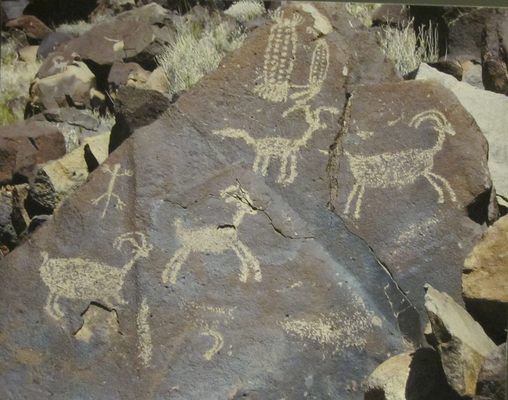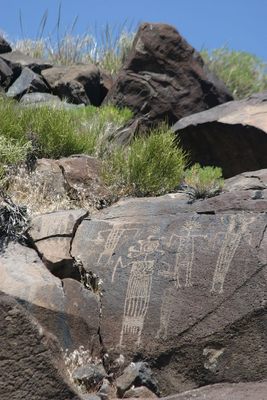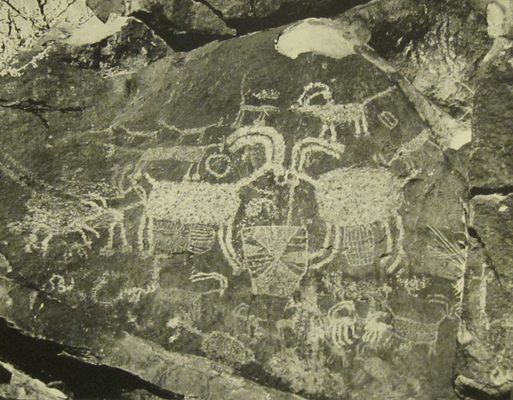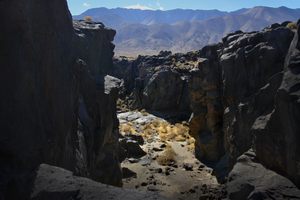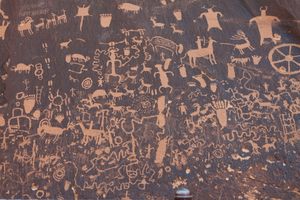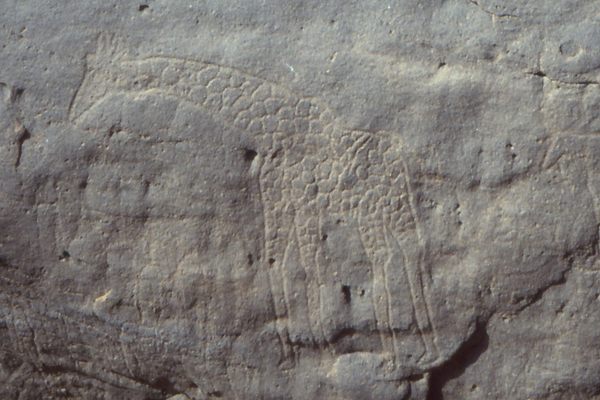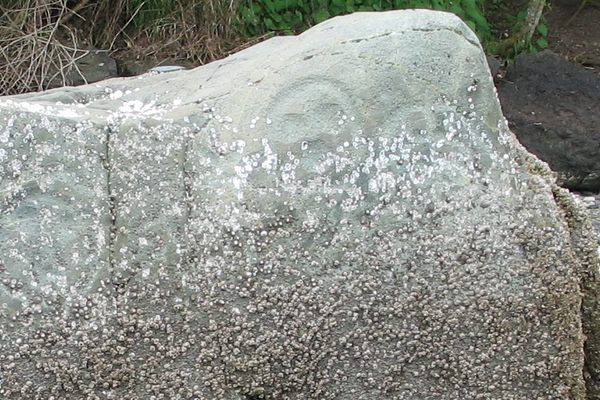About
Situated within Southern California's Naval Air Weapons Station China Lake, the Coso Mountain Range is a vast desert landscape that boasts some of the oldest and most plentiful examples of Native American rock art in the Western Hemisphere.
It’s believed that the Coso Rock Art District in the Mojave Desert was inhabited by early Indigenous people as long as 13,500 years ago, rendering this arid region one of the earliest settlements on the North American continent. But this 90-square-mile area is most famously characterized by its abundance of ancient petroglyphs, as many as 100,000 pictures scratched or ground into the basalt rock face.
Portrayals of bighorn sheep, reptiles, human hunters, and different symbols are found across the region, and archaeologists can only speculate about the intended purposes of these pictorial narratives. Various theories have supposed the petroglyphs to be territorial markers, time-tellers, ritual conjurers, and visual educators, but experts have yet to settle on any sort of definitive hypothesis.
According to Farwestern, in the 1960s, a group of anthropologists postulated that the petroglyphs were linked to “hunting magic," a ritual intended to conjure a fruitful hunt. The profusion of sheep engravings in the Coso Range indicate that regional hunter-gatherers were reliant on these animals for survival, but the later invention of the bow and arrow some 1,500 years ago most likely expended the local sheep populations. Therefore, the widespread emergence of petroglyphs depicting longhorn sheep may have been a ceremonial attempt at reviving the herds.
Another theory proposes that rock art was a shamanic practice, and that the petroglyphs were created during visions to facilitate the acquisition of supernatural powers related to controlling the weather.
Dating techniques have indicated that the the oldest drawings may have been created between 10,000 and 19,000 years ago. The petroglyphs could have been created not long after early humans arrived in North America at the end of the last ice age. The prehistoric Coso people may have originated the style, which eventually spread to the other nearby regions. The oldest Coso petroglyphs date back to the Paleoindian period, with more carvings introduced over millennia of human occupancy in the area, which came under the control of the U.S. Navy in the 1940s. Not all the petroglyphs have been accounted for, but records indicate upwards of 100,000 in the region.
Related Tags
Know Before You Go
The Coso Range is located within an active U.S. military base, which requires clearance before entry. Prospective visitors must fill out an application before arriving. Spring and fall tours are offered through the Maturango Museum’s website. The Coso petroglyphs are sacred to the region’s former inhabitants, so guests to the Rock Art District (a National Historic Landmark) are asked to view them respectfully. Due to the delicate nature of these archaeological points of interest, visitors are asked not to touch, sit or stand on the petroglyphs, or alter their designs in any way.
Published
October 24, 2018

